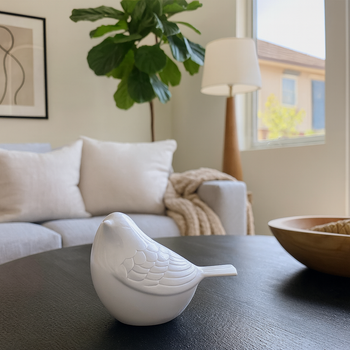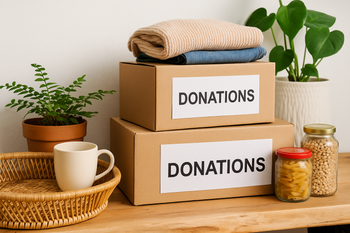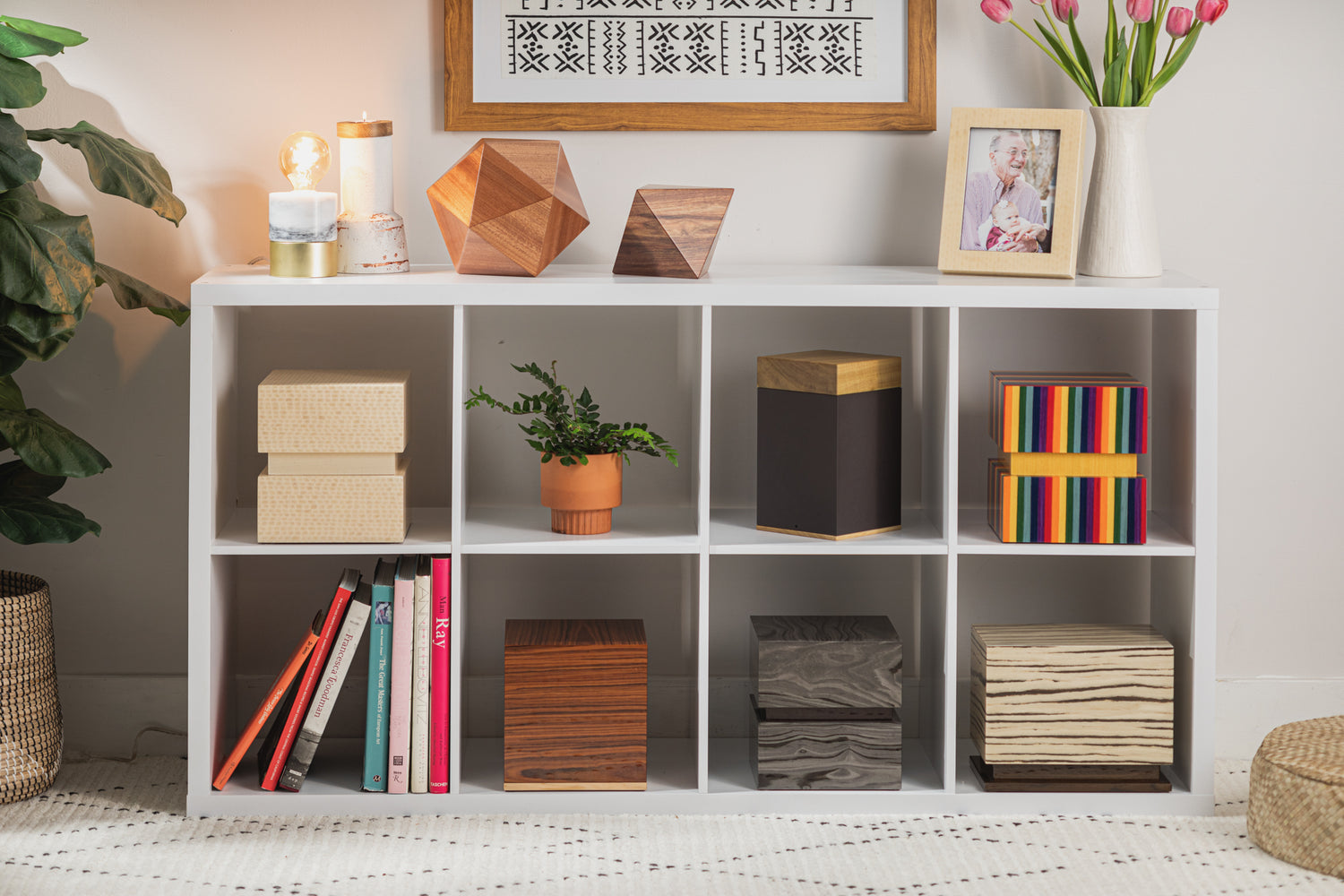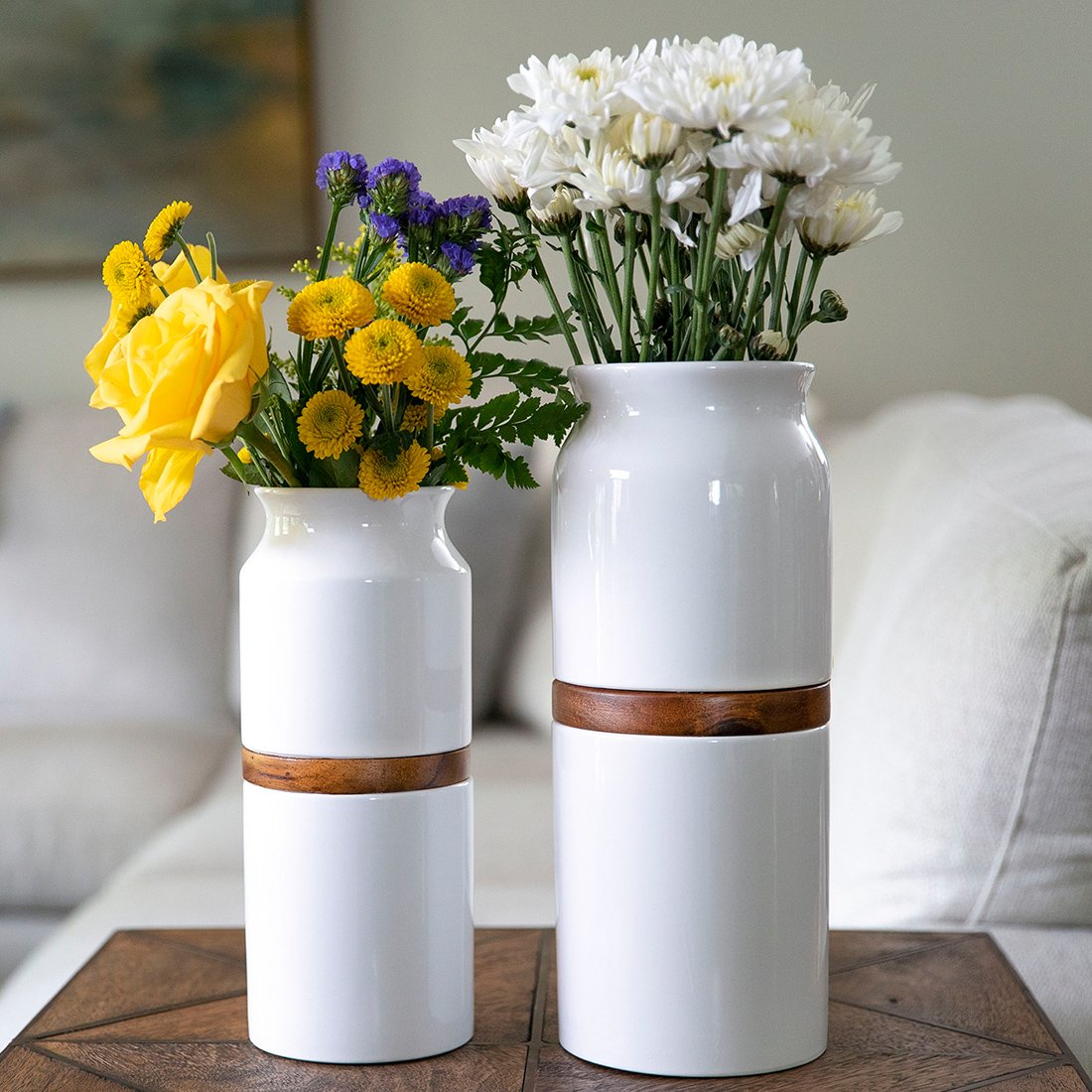

Grief is a profound emotional journey. It can bring waves of sadness, anger, guilt, confusion and even relief. These emotions often arise unexpectedly, leaving us feeling overwhelmed and disconnected. While there is no way to bypass grief, there are practices that can support us through it. Guided meditation and mindfulness are powerful tools that help calm the heart, soothe the mind and create space to process emotions. This article explores how mindfulness can support your healing, offers practical meditation techniques and provides tips for incorporating guided meditation into your daily life.
Why Meditation for Grief?
Grief affects not only our emotions but also our bodies and minds. It can disrupt sleep, appetite, concentration and cause physical tension. Meditation offers several benefits for those mourning a loss:
-
Grounding: Meditation encourages awareness of the present moment. When grief pulls you into painful memories or anxious futures, mindfulness brings you back to here and now, where you can take one breath at a time.
-
Emotional Regulation: Rather than suppressing feelings, meditation helps you observe emotions with curiosity and compassion. This reduces reactivity and allows emotions to move through you.
-
Stress Relief: Meditation activates the parasympathetic nervous system, lowering heart rate and blood pressure. It eases the physical symptoms of stress, such as tight muscles and shallow breathing.
-
Self-Compassion: Grief often comes with self-blame or “should haves.” Mindfulness encourages a kinder inner dialogue, reducing harsh self-criticism.
-
Mental Clarity: By quieting mental chatter, meditation creates space for insights and memories to surface, helping you process and make sense of your grief.
-
Spiritual Connection: For some, meditation fosters a sense of connection to the deceased or to something larger than oneself, whether that’s nature, a higher power or collective humanity.
While meditation isn’t a cure for grief, it equips you with tools to navigate it more skillfully.
Understanding Guided Meditation
Guided meditation involves listening to a teacher or narrator who leads you through a meditation practice. This can be done in person, via audio recordings, apps or videos. For those new to meditation or those whose minds feel too scattered to sit in silence, guided meditation provides structure, comfort and companionship.
There are many types of guided meditations, such as:
-
Breath Awareness: Focusing on the sensation of breathing.
-
Body Scan: Paying attention to sensations throughout the body.
-
Loving-Kindness (Metta): Cultivating compassion for yourself and others.
-
Visualization: Imagining peaceful scenes or connecting with loved ones through imagery.
-
Affirmations: Repeating phrases that foster healing, strength or acceptance.
-
Grief-Specific Meditations: Designed to support those mourning a loss, focusing on releasing guilt, connecting with memories or finding solace.
Experiment with different formats to see what resonates with you. Some people enjoy a narrator’s voice; others prefer ambient music or natural sounds.
Preparing for Meditation
Meditation doesn’t require special equipment or a particular location, but a calm environment helps. Follow these steps to prepare:
Create a Sacred Space: Choose a quiet corner of your home. It can be as simple as a cushion on the floor or as elaborate as an altar with candles, photos, flowers or objects that remind you of your loved one. Make sure the space feels safe and comforting.
Choose Comfortable Posture: Sit on a cushion, chair or bed. Support your back. If you prefer lying down, be aware of the potential to fall asleep—this is okay, especially if you need rest, but try to remain alert to experience meditation’s benefits.
Set a Timer: Decide how long you’ll meditate. Beginners may start with 5–10 minutes and gradually increase. A timer prevents you from worrying about time.
Minimize Distractions: Silence your phone, inform household members, and consider using earphones to focus on the guided voice. If intrusive thoughts arise (and they will), gently return attention to the guidance.
Set an Intention: Before beginning, acknowledge why you’re meditating. Your intention might be “to be present with my grief,” “to connect with my loved one,” or simply “to rest.” This anchors your practice.
Guided Meditation Techniques for Grief
Below are some meditation approaches specifically supportive of grief. You can record yourself reading these instructions, ask a trusted friend to guide you or find pre-recorded versions that suit your style.
1. Compassionate Breath Awareness
This simple practice focuses on the breath, using it as an anchor when emotions and thoughts feel overwhelming.
-
Sit comfortably with your eyes closed or softly gazing downward.
-
Take a few deep breaths, inhaling through the nose and exhaling through the mouth.
-
Allow your breath to settle into its natural rhythm.
-
Place a hand over your heart or stomach. Feel the rise and fall.
-
Silently say to yourself on the inhale, “Breathing in, I am here.” On the exhale, “Breathing out, I am held.”
-
If tears come or memories arise, acknowledge them. Whisper, “This is grief,” or “Hello, sadness.” Then return to your breath.
Practice this for 5–10 minutes. If emotions intensify, take a break or continue breathing gently until you feel calmer. Over time, this meditation trains your mind to return to the breath when grief storms blow.
2. Memory Garden Visualization
Visualizations can be comforting and allow you to feel connected with the person you miss. The memory garden is an exercise in which you create a peaceful space in your imagination.
-
Close your eyes and imagine yourself in a beautiful garden. Notice the colors, scents, textures and sounds.
-
Visualize a path leading to a bench, where you sit and feel the sun or a gentle breeze on your skin.
-
Invite the memory of your loved one into the garden. They may appear as they looked, as a symbol (like a bird or light) or as a feeling. Trust whatever arises.
-
Spend time with them. Perhaps you talk, or simply sit together. You might sense their presence or warmth. Let whatever happens unfold naturally, without forcing it.
-
When it’s time to end, thank them or the space. Walk back along the path and take a few deep breaths before opening your eyes.
This meditation can be deeply moving. Allow tears, smiles or emotions to arise. If the visualization feels too intense at first, visit briefly and gradually lengthen your time.
3. Loving-Kindness (Metta) for Yourself and Others
Grief can make us feel isolated. Loving-kindness meditation expands our capacity for compassion toward ourselves and others.
-
Sit comfortably and close your eyes. Take a few breaths to settle.
-
Repeat silently: “May I be safe. May I be held. May I find peace.” Notice any resistance or emotion. It’s okay if the words don’t feel true at first; the practice plants seeds.
-
Imagine someone who cares for you sending you these wishes. Feel them wrapping you in warmth or light.
-
When you feel ready, bring to mind your loved one and say, “May you be at peace. May you be free from suffering. May you feel my love.”
-
Extend these wishes to all beings who are grieving: “May all who suffer grief be comforted. May all hearts find solace.”
Finish by returning to your own heart and repeating, “May I be kind to myself.” This practice fosters connection, empathy and acceptance.
4. Body Scan for Release
Grief often settles in the body as tension, fatigue or heaviness. A body scan helps you sense and release these physical sensations.
-
Lie down or sit in a reclined position. Close your eyes.
-
Begin at your toes. Bring awareness to them. Notice any sensation—warmth, tingling, numbness. Imagine breathing into your toes and exhaling any tension.
-
Move to your feet, ankles, calves and knees. With each area, observe without judgment. Let go of any tightness with your exhale.
-
Continue slowly up your body: thighs, hips, lower back, stomach, chest, shoulders, arms, hands, neck, face and head.
-
When you reach your heart, pause. Notice any heaviness or aching. Imagine breathing gentle light into your heart. As you exhale, picture that heaviness softening. You can repeat a phrase like, “My heart is tender. I give myself compassion.”
-
When finished, take a few cleansing breaths and gently wiggle your fingers and toes before opening your eyes.
The body scan can reveal where you hold grief physically. Regular practice helps release tension and invites relaxation.
5. Guided Journaling Meditation
Writing can be a form of meditation, bringing subconscious thoughts to the surface. Combine meditation with journaling by first centering yourself through breathing and then writing freely.
-
Sit with your eyes closed for a few minutes, focusing on your breath.
-
When you feel calm, open your eyes and begin writing. Start with prompts like: “I miss…,” “Today I felt…,” “My loved one taught me…,” “I’m grateful for…”
-
Write continuously without worrying about grammar or coherence. Let your pen flow for 10–15 minutes.
-
When you finish, read what you’ve written. Acknowledge any emotions that arise. Take a few breaths to ground yourself.
Guided journaling externalizes grief, making space in your mind. It can reveal patterns and give voice to thoughts you didn’t know you had.
Overcoming Challenges in Meditation
Meditation can be challenging, especially when grieving. Common obstacles include:
-
Restlessness or Inability to Sit Still: If sitting feels uncomfortable, try walking meditation. Walk slowly, focusing on the sensation of your feet lifting and touching the ground. Synchronize your breath with your steps.
-
Racing Thoughts: Remember that thinking is part of meditation. When thoughts arise, gently return to your anchor—your breath, a mantra or the guiding voice. Over time, the gap between thoughts may widen.
-
Intense Emotions: Meditation can surface painful feelings. You may feel sadness, anger or guilt. If emotions become overwhelming, open your eyes, place your hands on your heart and take a break. Come back to meditation later or shorten sessions.
-
Judgment and Expectations: Thoughts like “I’m doing this wrong” or “I should feel better by now” can arise. Recognize them as judgments and return to the present. Meditation is about noticing, not judging.
-
Inconsistent Practice: Grief disrupts routines. If you miss a day, be gentle with yourself. Aim for consistent, small practices rather than lengthy sessions. Even one minute of mindful breathing counts.
Meditation is a skill that develops over time. Approach it with patience and curiosity, knowing that grief is not linear and neither is your practice.
Integrating Mindfulness into Daily Life
Beyond formal meditation, mindfulness can permeate your day:
-
Mindful Moments: Choose daily activities—washing dishes, drinking tea, showering—and do them with full attention. Notice sensations, smells and textures. When your mind wanders, bring it back to the task.
-
Breath Breaks: Pause several times a day to take three conscious breaths. Notice how the inhale fills your lungs and how the exhale softens your body.
-
Nature Connection: If possible, spend time outdoors. Feel your feet on the ground, listen to birds or watch clouds. Nature reminds us of cycles—growth, decay and renewal—that mirror grief.
-
Loving-Kindness in Action: Practice kindness by performing small acts of generosity. Send a supportive message to someone else who is grieving, hold the door for a stranger or smile at someone. Compassion directed outward often reflects inward.
-
Gratitude Reflections: Each evening, write down or think of three things you’re grateful for. They can be simple—sun on your face, a warm blanket, a memory of your loved one. Gratitude doesn’t erase grief, but it can coexist and bring balance.
These practices cultivate presence throughout the day, making mindfulness a way of being rather than just an activity.
Resources for Guided Meditation
To support your meditation journey, explore resources tailored to grief:
-
Mobile Apps: Apps like Insight Timer, Calm and Headspace offer grief-specific meditations. Insight Timer has community-led sessions and grief circles.
-
Online Platforms: Websites and YouTube channels feature guided meditations for loss. Search for “guided meditation for grief” to find audio tracks from counselors and mindfulness teachers.
-
Grief Support Groups: Many hospices, community centers and churches offer meditation sessions or spiritual care for mourners. Being with others who understand grief can enhance the healing process.
-
Books and Recordings: Authors and meditation teachers have published books and CDs with scripts and guided meditations for grief. Check your local library or bookstore.
Choose voices and styles that resonate with you. Some people prefer a gentle, soothing tone; others connect with more structured guidance. Try different resources until you find what feels supportive.
Combining Meditation with Other Healing Modalities
Meditation complements other healing practices. Pair it with:
Therapy: A counselor can help you process complex emotions. Meditation provides self-care between sessions.
Art Therapy: Creative expression releases emotions that are hard to verbalize. Combine art projects with brief meditations to inspire themes or calm you beforehand.
Yoga or Gentle Movement: Moving meditation like yoga, tai chi or qigong links breath to movement, releasing tension and promoting balance.
Support Groups: Sharing experiences with others who understand grief can be validating. Begin or end group meetings with a short meditation to center participants.
Nature Walks: Combine meditation with forest bathing. Walk slowly, noticing sounds, sights and smells. Sit by a tree or water to meditate.
Grief is multifaceted. Using multiple healing modalities addresses different aspects—emotional, physical, mental and spiritual.
Conclusion
Guided meditation and mindfulness offer compassionate companions on the journey through grief. They provide a space to breathe deeply, feel fully and cultivate kindness toward yourself. By practicing breath awareness, loving-kindness, visualization, body scans and mindful journaling, you create rituals that honor your loved one and support your own healing. Remember that there is no right way to meditate, and no timeline for grief. Allow yourself to experience whatever arises without judgment. Over time, these practices can calm the heart, quiet the mind and remind you of your inherent capacity to heal. Through meditation, you connect with the present moment—and within that moment, you may discover glimpses of peace, resilience and love that endure beyond loss.
Our Best Selling Collection
Frequently Asked Questions
What are the shipping options for my memorial?
Oaktree offers free nationwide shipping on all urns and cremation jewelry items, with delivery typically taking 2-5 business days, including processing time. Need it sooner? Expedited shipping (overnight or 2-day) is available at checkout for an additional cost, and we will also prioritize processing for faster delivery. If you need international shipping, please contact us first to confirm availability and rates.
How long will it take for my engraved item to arrive?
Engraved urns and cremation necklaces require an additional 1-3 business days for personalization before shipping. If you need faster delivery, please contact us—we’ll do our best to expedite processing and accommodate your timeline. Expedited shipping options are also available at checkout to ensure your memorial arrives as soon as possible.
What do I do if I never received my order?
If your order hasn’t arrived within 10 business days, please contact us so we can track your shipment and resolve any issues. We’ll ensure your memorial reaches you as soon as possible.
What do I do if I received a defective order?
If your order arrives damaged or defective, contact us right away. We take pride in our high-quality craftsmanship and will work quickly to replace or repair your item at no additional cost.
Can I return my urn or cremation necklace? What is your return policy?
Oaktree offers a 100-day return and exchange policy for non-engraved items. Due to personalization, engraved urns are final sale and cannot be returned. For full details on how to start a return or exchange, visit our Returns & Exchanges page.
How do I make changes to an urn I’ve already ordered?
If you need to modify an order, contact us as soon as possible. If your urn is already engraved, we may not be able to make changes, but we’ll do our best to accommodate your request before processing.
How are your urns made? Where do the materials come from?
Oaktree’s urns are handcrafted in the USA and Europe using sustainable, locally sourced materials. Our artisans ensure each piece is beautifully designed and built to honor your loved one’s memory with care.
How do I choose the right urn size?
Each product page includes detailed dimensions, weight capacity, and cubic inches to help you select the right urn. As a general guide, 1 cubic inch holds 1 pound of pre-cremation weight. If you need help choosing, feel free to contact us.
Some urns are marked as “sold out.” When will they be available?
Our handmade urns may take a few weeks to restock. If you’re interested in a specific style, contact us for an estimated restock date, and we’ll notify you when it’s available.
Does Oaktree place the ashes into my urn?
Yes, we offer an optional ash transfer service for an additional fee. If you’d like us to handle this process, please contact us when placing your order. You’ll need to mail the ashes to us, and we’ll carefully transfer them into your selected urn.
How do I transfer ashes into my urn?
Cremated remains typically arrive in a sealed plastic bag inside a plastic container. To transfer them, simply place the sealed bag inside your urn. If needed, use a funnel for precise placement. If you have any concerns, our team is happy to assist.
How do I order an engraved urn?
To personalize your urn, select “Yes” under “Would you like your item engraved?” on the product page. If you’d like a custom design beyond standard engraving, contact us and we’ll explore options to create a unique tribute.
Can my urn be shipped directly to a funeral home?
Yes! During checkout, you can enter the funeral home’s address for direct shipping.
Can I customize my urn beyond engraving?
Yes! In addition to engraving, we offer custom design services, including unique finishes, symbols, or artwork. If you’d like to personalize your urn beyond standard options, contact us to discuss customization possibilities.
What materials are Oaktree urns made from?
Our urns are crafted from premium materials such as wood, ceramic, marble, metal, and biodegradable materials. We focus on sustainable sourcing and high-quality craftsmanship to create lasting memorials.
Do you offer keepsake urns or mini urns?
Yes, we offer keepsake urns and mini urns, which are smaller versions designed for sharing ashes among family members or keeping a small portion as a personal tribute.
Can I pre-order an urn for future use?
Absolutely! Many customers choose to pre-order an urn in advance. This ensures availability and allows for customization without time constraints. Contact us to arrange a pre-order.
Do you offer pet urns?
Yes, we provide a range of pet memorial urns designed to honor beloved pets. These are available in different materials and sizes to suit dogs, cats, and other pets.
How do I clean and maintain my urn?
Urns require gentle care to maintain their beauty. Use a soft cloth and mild cleaner for metal or ceramic urns. Avoid direct sunlight and moisture to preserve wood urns. Contact us for specific care instructions based on your urn’s material.
Can I travel with an urn? Are they TSA-approved?
Most Oaktree urns are TSA-compliant, making them safe for air travel. Choose a non-metal urn to ensure easy screening. We recommend carrying the urn in your carry-on bag and bringing the cremation certificate from the funeral home.
How do I track my order?
Once your order ships, we’ll send you a tracking number via email. You can use this to monitor the shipment status. If you don’t receive tracking details, contact us for assistance.
How do I contact Oaktree if my question isn’t answered here?
We’re happy to assist! Visit our Contact Us page to reach us via email, chat, or phone. Our compassionate team is ready to help.






